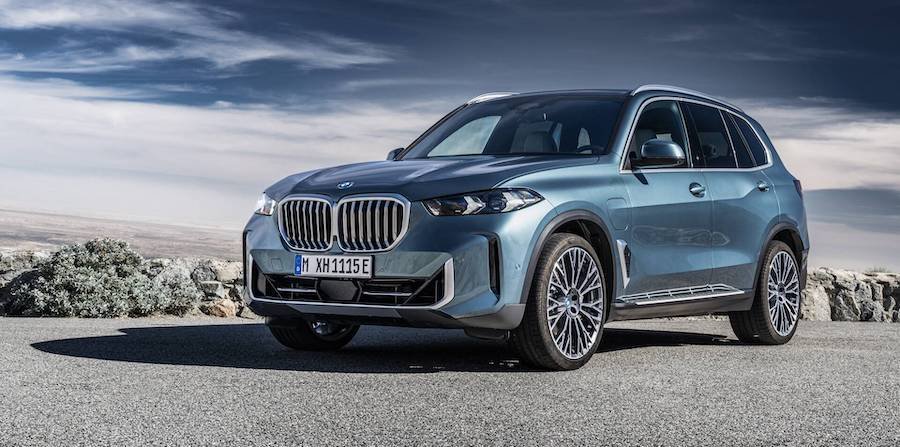New 2023 BMW X5 and X6 bring upgraded hybrid, new cockpit

BMW will launch significantly refreshed versions of its BMW X5 and BMW X6 in April, detailing new features just a week after key rival Mercedes-Benz revealed its reworked GLE and GLE Coupe.
Among the changes brought to the fourth-generation X5 and third-generation X6 is a light reworking of the exterior, an upgraded interior featuring a new digital display and modified drivetrains in a number of renamed models, including a 309bhp petrol-electric unit in the new X5 xDrive50e offering a claimed electric range of up to 68 miles.
As part of a mid-life facelift, the X5 and X6 both receive a new-look grille within a reprofiled front bumper. The 2023-model-year X5 also adopts xLine design elements as standard, while the X6 is fitted with the M Sport package. Inside, the facelifted X5 and X6 adopt similar changes to the facelifted X7, alongside which they are produced at BMW’s Spartanburg factory in the US.
Heading the interior changes is a new curved digital panel mounted atop a lightly reworked dashboard. Running the latest 8.0 version of BMW’s iDrive operating system, it houses a 12.3in instrument display and 14.9in infotainment touch display as part of a standard BMW Live Cockpit Plus system, which includes a cloud-based BMW Maps navigation system. The air conditioning controls in the centre console receive additional touch controls.
Options come in the form of a head-up display unit with augmented reality functionality, a panoramic glass sunroof with LED illumination, glass applications for various controls and a Bowers & Wilkins sound system.
Power for the 2023-model-year X5 and X6 comes from a revised range of petrol, diesel and petrol-electric plug-in drivetrains – all claimed to offer improved efficiency and economy in combination with an eight-speed automatic gearbox and BMW’s xDrive four-wheel drive system as standard.
With changes to its combustion process, valve control and ignition system, the turbocharged 3.0-litre inline six-cylinder petrol unit (X5 xDrive50i, X6 xDrive40i) delivers 375bhp and 383lb ft (up 46bhp and 52lb ft). The diesel variant (X5 xDrive30d, X6 xDrive30d) sees power remain the same at 278bhp and 479lb ft despite internal reworkings.
Elsewhere, the standard six-cylinder petrol and diesel, as well as the V8 petrol, all gain a 48V battery, adding 12bhp and 147lb ft via a gearbox-mounted electric motor.
Changes at the top of the model line-up have also been made with the X5 M50 xDrive and X6 M50 xDrive now taking the M60 nameplate. Despite this, they still run the same turbocharged 4.4-litre V8 petrol engine as before with 523bhp and 553lb ft. This provides the two M Performance models with a claimed 0-62mph time of 4.3sec.
The petrol-electric plug-in hybrid drivetrain in the earlier X5 xDrive45e – now X5 xDrive50e – has been upgraded with a newer-generation turbocharged 3.0-litre six-cylinder petrol engine, delivering an additional 26bhp at 309bhp.
Together with a more powerful gearbox-mounted electric motor developing an added 84bhp at 197bhp, the overall system power has increased to 490bhp. Torque also climbs by 75lb ft to 516lb ft. Battery capacity has increased by 3.4kWh to 25.7kWh. It is claimed to provide an electric range of between 58 and 68 miles on the WLTP test cycle.
Related News
